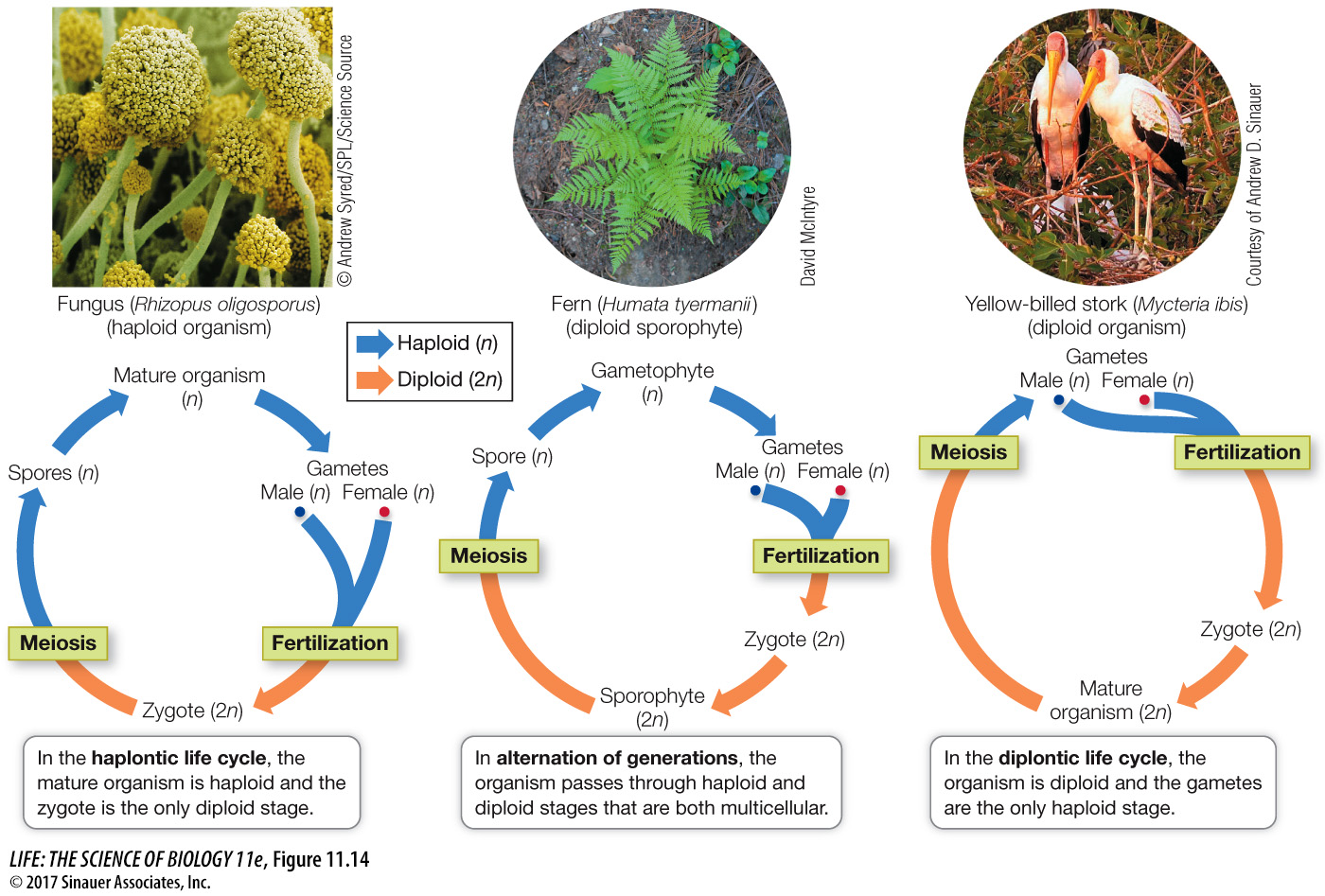Sexual life cycles produce haploid and diploid cells
In most multicellular organisms, the body cells that are not specialized for reproduction, called somatic cells, each contain two sets of chromosomes, which are found in pairs. One chromosome of each pair comes from each of the organism’s two parents; in humans, for example, 23 of the 46 chromosomes come from the mother and 23 from the father. The members of such a homologous pair are similar in size and appearance. The two chromosomes in a homologous pair (called homologs) bear corresponding, though not identical, genetic information. For example, a homologous pair of chromosomes in a plant may carry different versions of a gene that controls seed shape. One homolog may carry the version for wrinkled seeds while the other may carry the version for smooth seeds. You’ll see these genes in the next chapter.
There is no simple relationship between the size of an organism and the number of chromosomes in its genome. A housefly has 5 chromosome pairs and a horse has 32, but the smaller carp (a fish) has 52 pairs. Probably the highest number of chromosomes in any organism is in the fern Ophioglossum reticulatum, which has 1,260 (630 pairs)!
In contrast to somatic cells, gametes contain only a single set of chromosomes—
All sexual life cycles involve meiosis to produce haploid cells. Figure 11.14 presents three types. In some life cycles the products of meiosis undergo cell division, resulting in a mature organism with haploid cells. Specialized cells in these organisms become gametes. In other life cycles the gametes form directly from the products of meiosis. In all cases, the gametes fuse to produce a zygote, beginning the diploid stage of the life cycle. Since the origin of sexual reproduction, evolution has generated many different versions of the sexual life cycle.

Activity 11.3 Sexual Life Cycle
www.Life11e.com/
The essence of sexual reproduction is the random selection of half of the diploid chromosome set—one member of each genetically similar chromosome pair—
226
Meiosis, unlike mitosis, results in daughter cells that differ genetically from the parent cell. We will now look at the details of meiosis to see how this genetic shuffling occurs.